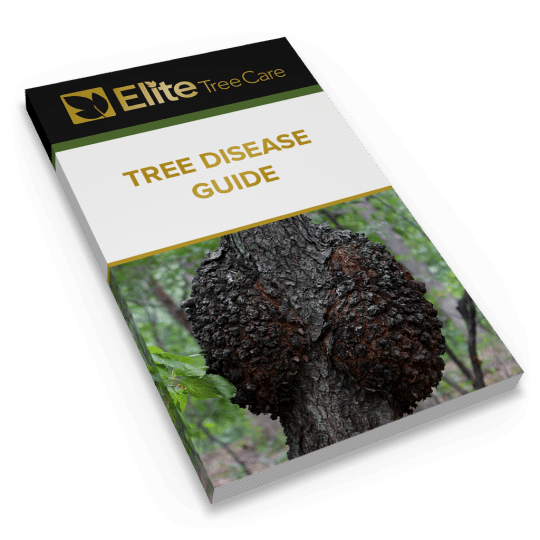Tree Disease Spotlight: Black Knot
Posted
February 9, 2017

Black knot is a fungal tree disease that affects plum and cherry tree species throughout North America. Caused by the fungi Apiosporina morbosa and Dibotryon morbosum, a severe black knot infection is at its worst during moist spring weather when the wind carries spores to nearby plum and cherry trees. If left untreated, black knot can kill infected trees. There are a few ways to control this disease and prevent its spread. Read on to learn more about black knot identification and treatment.
Identification
Black knot reveals itself in lumpy black knots (also known as swells and galls) on a tree’s twigs, branches, and trunk. At first, the knots are olive-green in color, but they eventually harden and blacken, growing up to 1′ in size. Knots are longer than they are wide and are most evident in late winter and early spring, before the tree’s foliage grows in. When left untreated, multiple knots appear on a tree before encircling and killing the affected area. Knots leave openings that allow insects to enter the tree to nest and feed.
Control
Pruning is one of the most effective ways of controlling black knot. Start by removing all branches, twigs, and shoots with knot growth (6″ below the knot) in winter. Inspect all cherries and plums on your property and dispose of all clippings immediately, as this airborne disease can still spread. Timed spray intervals are also a popular way to deal with the disease. Experts recommend spraying a fungicide every seven to 10 days in the spring. Avoid applying fungicide on windy days.
Taking immediate action can save your tree. A tree weakened by black knot can affect fruit production, overall appearance, and can make it more vulnerable to pests and disease.
Free Quote for Black Knot Treatment
The ISA-certified arborists at Elite Tree Care are here to help you treat your trees for black knot and prevent its spread. Protect the health of the trees on your property by contacting us today at 610-935-2279 for a free estimate for black knot control and prevention.

Download Your FREE Tree Disease Guide
Get a grip on what’s plaguing your tree with our visual overview of common tree diseases. (Most likely, it’s a fungus.)